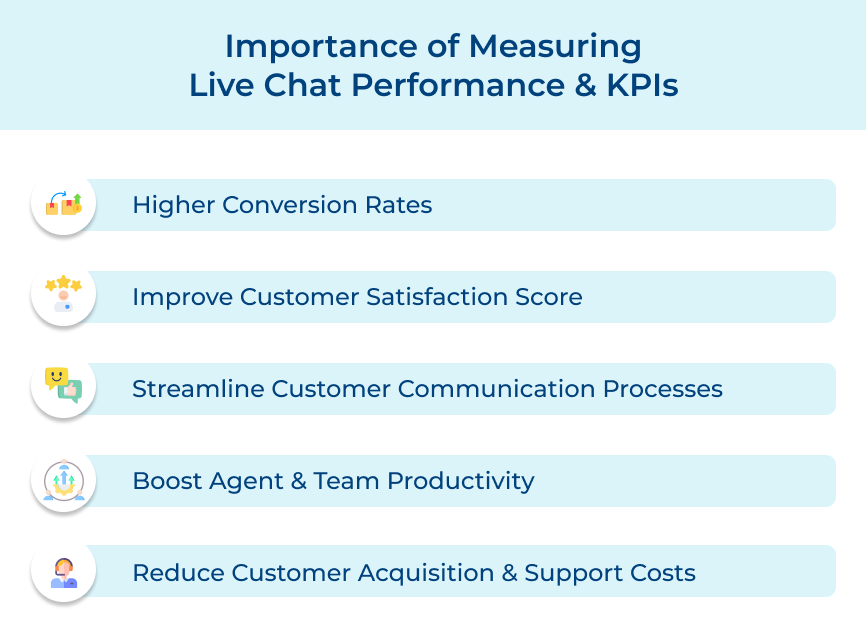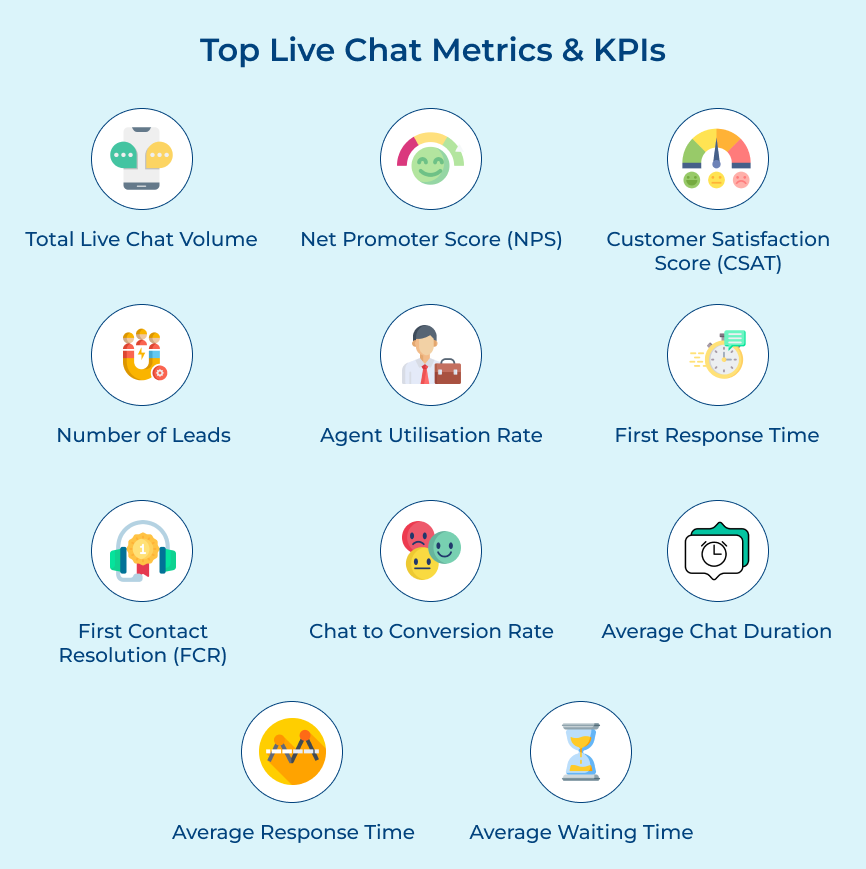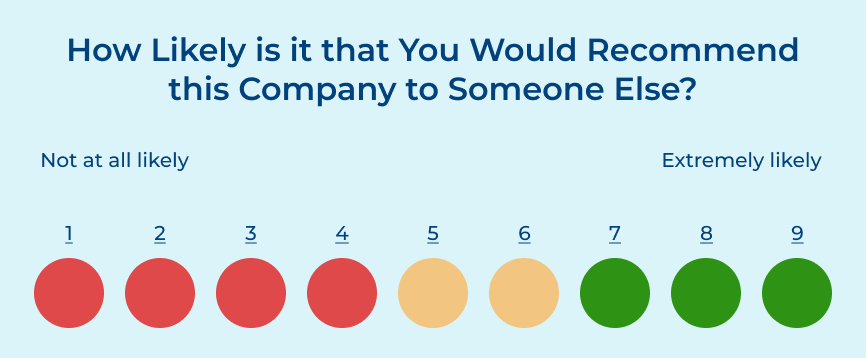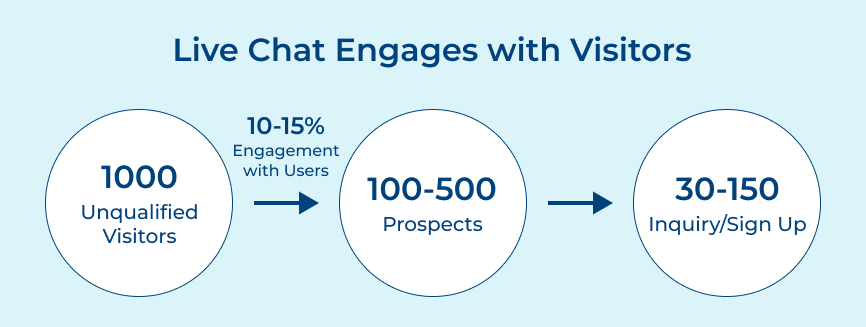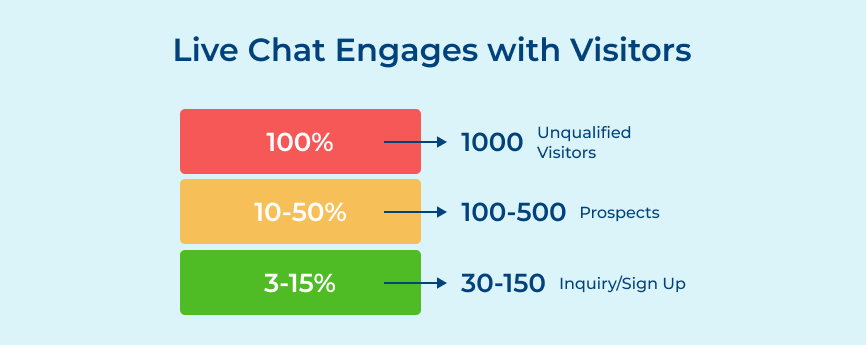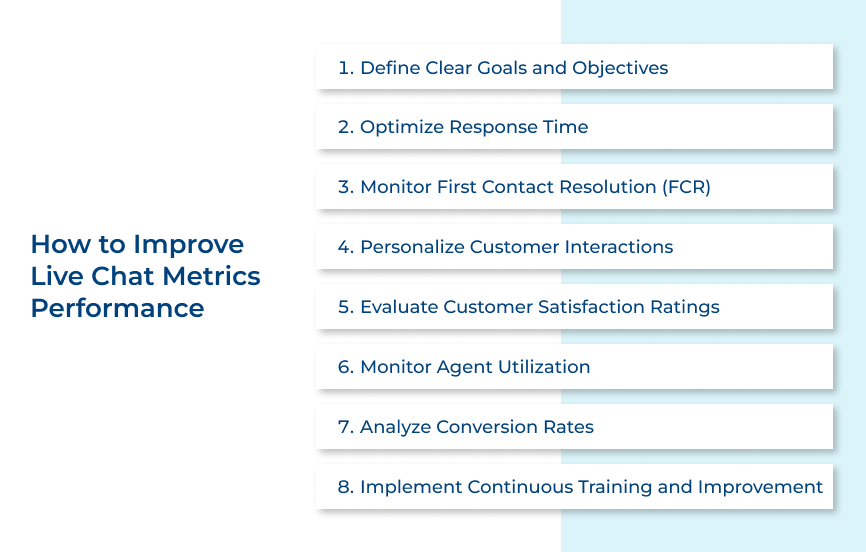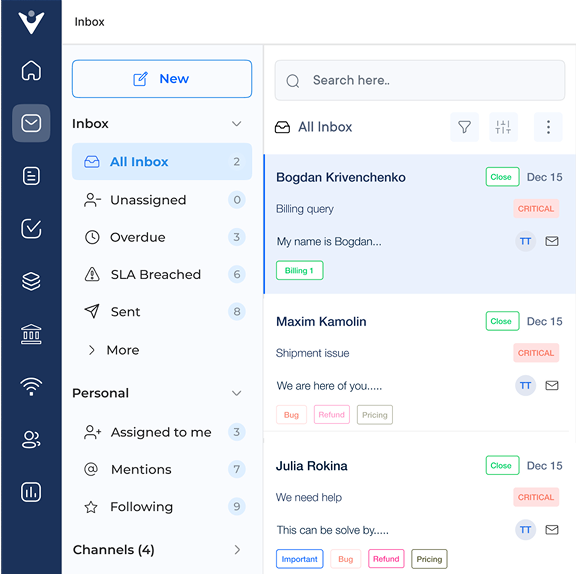1. Define Clear Goals and Objectives
Setting clear objectives is crucial for any successful endeavor and live chat is no exception. Determine what the business wants to achieve with its chat service. Do you want to increase customer satisfaction, reduce response times, or generate leads? Defining specific goals enables everyone to focus their efforts on improving the right live chat metrics and KPIs.
2. Optimize Response Time
Prompt response time is essential for customer satisfaction. 90% of customers state instant responses as essential. Aim to minimize response times by training the live chat agents to provide quick and accurate responses. Implement tools such as canned responses or chatbots to handle simple queries. It will allow the agents to focus on resolving more complex issues.
3. Monitor First Contact Resolution (FCR)
FCR measures the percentage of customer inquiries resolved during the first interaction. High FCR indicates efficient and effective customer service. Make sure to encourage the live chat agents to address and resolve customer issues during the initial chat, reducing the need for follow-up interactions.
4. Personalize Customer Interactions
Customers expect personalized experiences. 80% of customers say they’re more likely to buy from brands that deliver a customized experience. Train the agents to use the customer’s name and tailor responses based on their previous interactions. They can also add a personal touch on the basis of the customer’s purchase history.
5. Evaluate Customer Satisfaction Ratings
Customer satisfaction is a critical KPI for any chat implementation. After each chat session, prompt customers to provide feedback and rate their satisfaction. The valuable data allows the business and its leaders to evaluate the effectiveness of customer support. Brands can also leverage it to identify areas for improvement.
6. Monitor Agent Utilization
Agent utilization measures how effectively the support agents are handling chat sessions. Keep track of the number of chats each agent handles simultaneously and their availability. Businesses have to make sure their agents are neither overloaded nor sitting idle. Use the data to optimize agent schedules and staffing.
7. Analyze Conversion Rates
Tracking live chat conversion rates is essential for the business to focus on its sales. Measure the number of chat interactions that result in a successful conversion or sale. Analyzing conversion rates can help identify the most effective strategies for engaging customers and driving sales through live chat.
8. Implement Continuous Training and Improvement
Invest in continuous training and improvement for the customer support team. Live chat is an evolving channel and ongoing training keeps agents updated with the latest techniques. Regularly assess agent performance, identify any knowledge gaps and provide coaching to enhance their skills.
Grow Business by Measuring the Right Live Chat KPIs & Metrics
Focusing on the right live chat KPIs turns support into a measurable driver of better service and stronger customer relationships. Metrics like first response time, resolution rates, and satisfaction scores reveal where processes break down or where the teams can improve.
The real value comes from choosing KPIs that reflect business priorities, not just surface-level numbers. Tracking trends in chat volume, agent performance and conversion rates creates a feedback loop for ongoing improvement. The teams can solve issues faster and make every conversation more effective.






